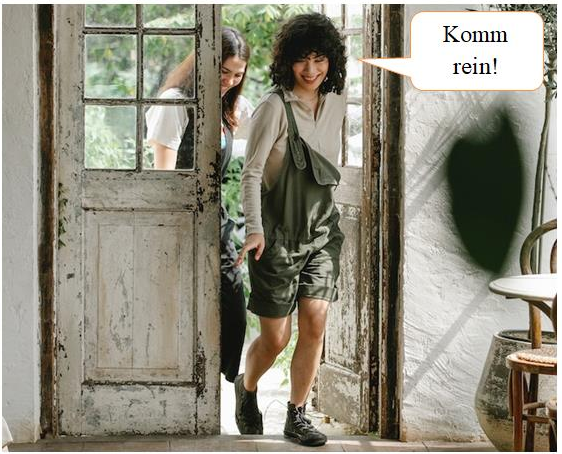In this lesson you will learn all about German adverbs. Adverbs are categorized into four types: place, time, manner, and cause.
Thank you for reading this post, don't forget to subscribe!CONTENT
What are adverbs?
What types of adverbs are there?
Difference between adverb and adjective
The place of the adverb in the sentence
Adverbs at the beginning of a sentence
Adverbs in the middle of a sentence
Adverbs comparison
weit + comparative
What are adverbs?
Adverbs tell us under what circumstances something happens. They provide information about the place, time, cause and manner of an action. They refer to a verb or an adjective and are used to describe when, how, where or why something happens. Adverbs are invariant and never declined.
For example:
Verb: Ich komme heute Abend.
Adverb: Das war eine sehr schöne Ausstellung.
Click on:
Grammar Contents
What types of adverbs are there?
Adverbs in the German language can, just like prepositions and conjunctions, be divided into groups by meaning:
Adverbs of place / Lokale Adverbien
Adverbs of time /Temporale Adverbien
Adverbs of manner /Modale Adverbien
Adverbs of cause/ Kausale Adverbien
Concessive, consecutive adverbs /Kausale, konzessive, konsekutive Adverbien
Difference between adverb and adjective
An adjective describes a noun :
Here is an example:
das nette Mädchen – cute girl
Das Mädchen ist nett. – The girl is cute.
Nett is an adjective here and in both sentences it refers to the noun das Mädchen and describes it in more detail.
Wer ist nett? – Das Mädchen.
Who is cute? – The girl.
An adverb describes a verb:
For example:
Das Mädchen lächelt nett.
Wie lächelt das Mädchen? – Nett.
In this example, nett is an adverb, because it refers to a verb. Nett here describes how the girl laughs.
The place of the adverb in the sentence
In a German sentence, adverbs can be placed at the beginning or in the middle of the sentence. We definitely have to pay attention to certain rules:
Adverbs at the beginning of a sentence
If the adverb is at the beginning of the sentence, then the subject comes after the verb. The verb always remains in second place in the main clause.
For example:
Am Morgen steht Mia früh auf.
Adverbs in the middle of a sentence
Adverbs, if they are not at the very beginning of the sentence, usually come after the verb in the third place in the sentence.
Mia steht am Morgen früh auf.
However, you must be aware of the following exceptions:
- The adverb usually comes BEFORE the object in the accusative, but AFTER the object in the dative.
- Ich gebe meinem Bruder heute einen Gutschein.
- Zora hilft seiner Mutter gern.
- Lana kauft morgen eine Wohnung.
- The adverb comes AFTER the reflexive pronoun:
Er kauft sich heute ein neues Auto. - If the object in the accusative case is a PRONOUN, then the adverb comes BEHIND, because adverbs cannot come before a personal pronoun:
Sie kauft sie morgen. - If the object in the dative is a pronoun, then the adverb is placed BEHIND.
Sie hilft ihr gern. - Adverbs come after personal pronouns.
Ich gebe ihn ihm heute.
Adverbs come before prepositions:
Ich gehe gern mit meiner besten Freundin ins Kino.
Click on:
Grammar Contents
Adverbs comparison
Unlike adjectives, most of which can be compared (Comparison of Adjectives), only a very small number of adverbs can be compared.
For example:
Man muss die Grammatik oft üben.
Man muss die Verben öfter üben.
Man muss die Nomen am häufigsten üben.
Adverbs that can be compared:
| positive | comparative | superlative |
| bald (soon) | eher (earlier, rather) | am ehesten (most probably) |
| gern (rather) | lieber (more rather) | am liebsten (most rather) |
| oft (often) | häufiger/öfter (more often) | am häufigsten (most offen) |
| sehr (very) | mehr (more) | am meisten (most) |
| wohl (well) | besser (better) | am besten (best) |
Weit + comparative
With this combination, it can be expressed that there is a big difference between something and there is a difference: much, far:
For example:
Er ist weit älter als ich. – He is much older than me.
Sie singt weit besser als er. – She sings much better than him.
See more:



